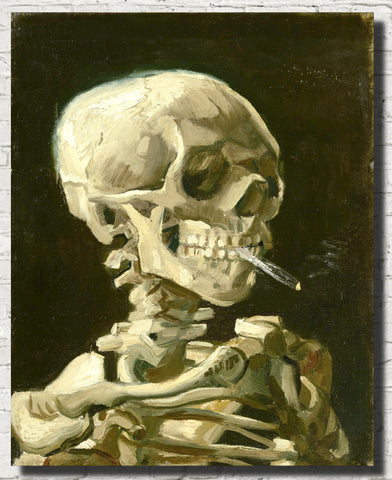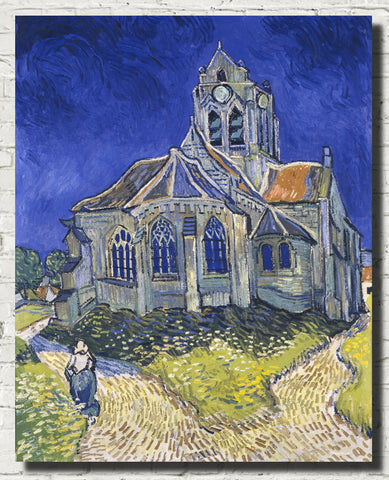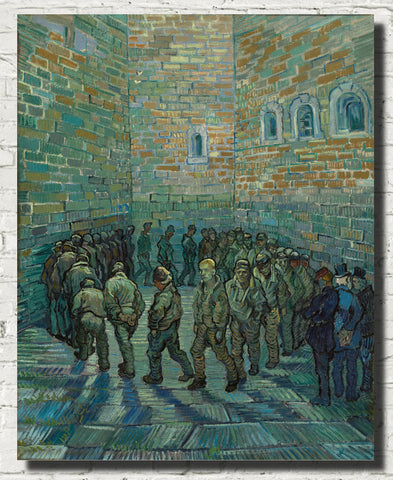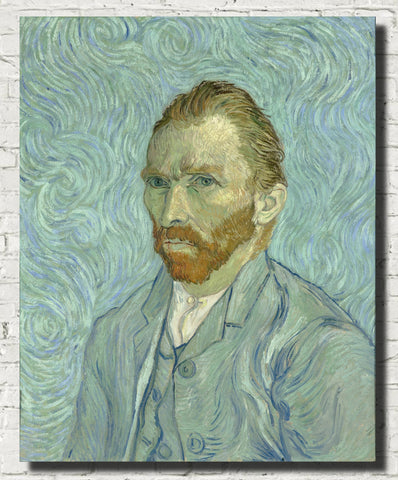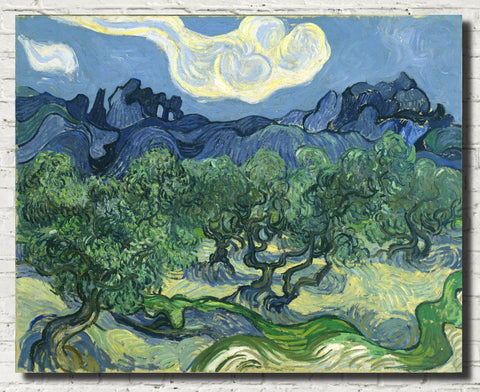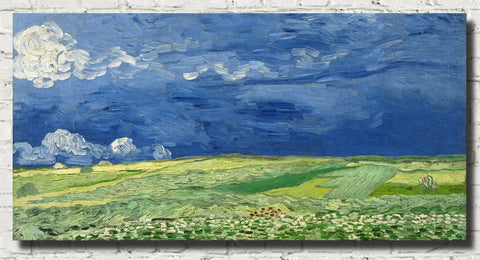Table of Contents:[hide]
Vincent van Gogh, a Dutch Post-Impressionist painter, left an indelible mark on the world of art with his bold and expressive works. In this exploration, we delve into the layers of his life, his artistic evolution, and the profound impact he has had on the art world.
1. The Artistic Odyssey of Vincent van Gogh
Vincent Willem van Gogh, born on March 30, 1853, embarked on an artistic journey that spanned just over a decade. In this short period, he created a staggering 2100 artworks, including iconic pieces like "Sunflowers," "The Starry Night," and "Bedroom in Arles." His oeuvre comprised landscapes, still lifes, portraits, and self-portraits, characterized by symbolic colors and dramatic brushwork that laid the groundwork for modern art.
2. A Glimpse into Van Gogh's Turbulent Life
Van Gogh's life was a tumultuous odyssey marked by poverty, mental illness, and artistic fervor. Born into an upper-middle-class family, he faced mental instability from a young age. After stints as an art dealer and missionary, he turned to painting in 1881, supported by his brother Theo.
The move to Paris in 1886 exposed Van Gogh to avant-garde influences, leading to a transformative period in Arles. His art blossomed, depicting vibrant scenes of olive groves and sunflowers. However, his mental health deteriorated, culminating in the infamous ear-severing incident during a clash with Paul Gauguin.
3. Van Gogh's Artistic Metamorphosis
Van Gogh's artistic evolution is evident in the shift from somber tones in Nuenen to the vivid colors of his later works. Despite personal struggles, he produced an impressive body of art, including the poignant "The Potato Eaters" and the luminous "Sunflowers." His paintings, bold in color and emotional intensity, foreshadowed movements like Fauvism and German Expressionism.
4. The Intimate Chronicles: Vincent's Letters
A treasure trove of insight into Van Gogh's mind lies in the letters exchanged with his brother Theo. Their correspondence, spanning from 1872 to 1890, unveils Vincent's thoughts on art, life, and the challenges he faced. These letters, described as having a "diary-like intimacy," provide a fresh dimension to understanding Van Gogh's artistic genius.
5. Van Gogh - Major Series
5.1 Van Gogh Self Portraits
Vincent van Gogh produced over 43 self-portraits from 1885 to 1889, often in series during periods of solitude. Reflecting intense self-scrutiny, these portraits mark significant life phases, such as his awareness of Monet and Cézanne in the 1887 Paris series. Notably, "Self-Portrait with Grey Felt Hat" showcases rhythmic brushstrokes and a Neo-impressionist halo. Van Gogh's self-representations vary widely in physiognomy, revealing his mental and physical state. Stylistically evolving, post-1888 portraits emphasize vivid colors, some depicting him with bandages after self-harm. The Saint-Rémy portraits notably show his head from the undamaged side.
5.2 Van Gogh - Flowers
Van Gogh, known for his vibrant art, painted multiple flower landscapes, notably roses, lilacs, irises, and iconic sunflowers. Two sunflower series stand out, one in 1887 Paris, depicting flowers on the ground, and the other in 1888 Arles, featuring bouquets in morning light. Intent on showcasing technical prowess to Gauguin, these works displayed thickly layered paintwork, embodying the "texture of the seed-heads." Painted during an optimistic phase, the sunflowers adorned the Yellow House for Gauguin's visit, later becoming iconic for their color symbolism and expressive brushstrokes.
5.3 Van Gogh Cypresses and Olives
In 1889, Vincent van Gogh passionately depicted cypresses in 15 canvases, transforming these trees traditionally associated with death into vibrant symbols of life. Starting in Arles, he initially placed them in the distance as windbreaks, later bringing them to the foreground at Saint-Rémy. Van Gogh's fascination extended to olive trees, resulting in at least 15 paintings. His Olive Trees with the Alpilles in the Background is celebrated for capturing the demanding yet compelling essence of the subject, showcasing nature's energy in gnarled, arthritic forms.
5.4 Van Gogh - Orchards
Van Gogh's Flowering Orchards, painted in Arles in 1888, radiate optimism and joy, capturing the essence of spring. The 14 vibrant and unpopulated works showcase his evolving personal style, blending elements of Impressionism. Expressing a sense of impermanence, the blossoming trees symbolize renewal. Van Gogh, inspired by Japanese motifs, rapidly painted these orchards, mastering light to portray trees as sacred sources. The vivid Mediterranean light further transformed his palette. Enthralled by southern France's landscape, Van Gogh's View of Arles, Flowering Orchards, continued his exploration of this captivating theme.
5.5 Van Gogh - Wheatfields
Van Gogh's artistic journeys around Arles yielded paintings capturing the rural beauty, including "The Old Mill" (1888), showcasing a picturesque structure amidst wheat fields. His window views from various locations culminated in "The Wheat Field" series at the Saint-Rémy asylum. Despite somber tones, his late works reflect optimism and a longing for mental clarity. In his final days, "Wheatfield with Crows" portrays his troubled state, featuring ominous skies and foreboding crows, conveying a sense of impending doom and mental unrest.
Van Gogh's Enduring Legacy
Van Gogh's tragic death at 37 did not obscure his legacy. Posthumously, his art gained critical acclaim, inspiring movements like Fauvism and German Expressionism. Today, his works command astronomical prices, and the Van Gogh Museum in Amsterdam stands as a testament to his enduring influence.
In unraveling the colors of Vincent van Gogh's turbulent life, we witness the convergence of brilliance and adversity, leaving an indelible mark on the annals of art history.
Vincent van Gogh FAQ's
-
Who was Vincent van Gogh?
- Vincent van Gogh was a Dutch Post-Impressionist painter born on March 30, 1853, known for his bold and expressive artworks.
-
How many paintings did Van Gogh create?
- In just over a decade, Van Gogh created approximately 2100 artworks, including 860 oil paintings.
-
What are some famous works by Van Gogh?
- Some of his renowned works include "Sunflowers," "The Starry Night," "Bedroom in Arles," and "The Potato Eaters."
-
What characterized Van Gogh's art style?
- Van Gogh's art is characterized by bold, symbolic colors, dramatic brushwork, and emotional intensity, contributing to the foundations of modern art.
-
What inspired the shift in Van Gogh's art during his time in Arles?
- Inspired by a spirit of artistic change and collaboration, Van Gogh's art transformed in Arles, depicting vibrant scenes of olive groves, wheat fields, and sunflowers.
-
How did Van Gogh's mental health impact his life and art?
- Van Gogh struggled with mental instability, leading to episodes, hospitalizations, and the infamous ear-severing incident during a confrontation with Paul Gauguin.
-
What role did Vincent's brother Theo play in his life?
- Theo supported Vincent financially and emotionally, facilitating his artistic pursuits. The extensive letters exchanged between them provide insight into Vincent's thoughts and art theories.
-
What is the significance of Van Gogh's letters?
- Van Gogh's letters, spanning from 1872 to 1890, offer a diary-like intimacy, providing a unique perspective into his artistic genius, thoughts on life, and the challenges he faced.
-
How did Van Gogh's art gain recognition posthumously?
- Van Gogh's art gained critical acclaim after his death, inspiring movements like Fauvism and German Expressionism. His works are among the world's most expensive paintings.
-
Where can one explore Van Gogh's legacy today?
- Van Gogh's legacy is honored at the Van Gogh Museum in Amsterdam, which holds the world's largest collection of his paintings and drawings.
Prints and Canvas Panels
Prints and ready to hang canvas panels of Vincent van Gogh's paintings are available in a range of sizes with fast worldwide delivery.
Related Articles
Decoding the self portraits of Vincent van Gogh
Van Gogh Flower Paintings
Van Gogh Wheat Fields
Related Articles
Decoding the self portraits of Vincent van Gogh
Vincent van Gogh Olive Tree Series


